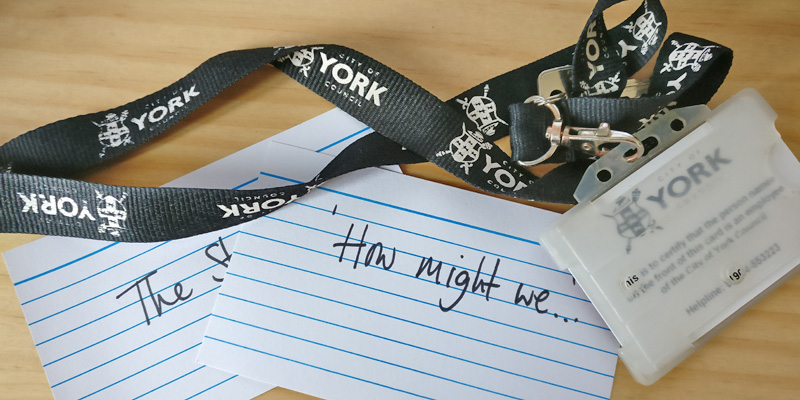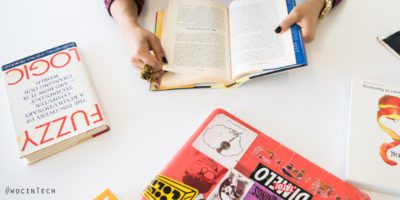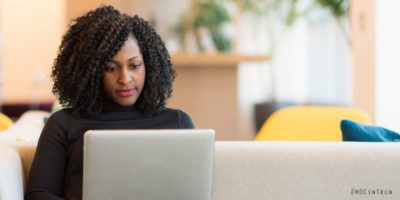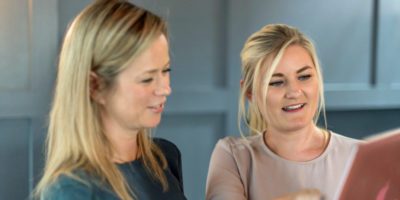Dr. Amy Holloway is a user design researcher at the City of York Council, where she uses her knowledge of psychology and neuroscience to carry out research to help improve user experiences. Amy studied for her Bachelor of Science at the University of Lincoln and went on to secure her Ph.D in Psychology and Neuroscience from the University of Nottingham.
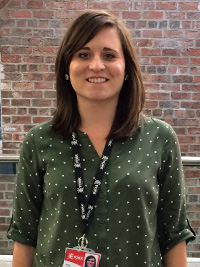
“…sometimes the word ‘tech’ can scare people and make them think that you have to be a super clever coding genius. I think the word ‘digital’ can also have the same connotation. This is not true!..”
From psychology to user research
For the past four years, I have been studying and writing up my Ph.D. in Psychology and Neuroscience, from the University of Nottingham. I have always been passionate about scientific research and knew that any career I gained should be research driven.
During my Ph.D., I started to consider a research career outside of academia. This got me interested in user research – studying how people interact with products, especially digital services, seemed very appealing. It fascinated me how the design of a product – whether that be a website, software or hardware – can influence measurable behaviour.
My Ph.D. was heavily focused on statistics and numbers, but I wanted to conduct research which gave me qualitative insights into behaviour. Since July 2017, I have been working as a user design researcher for City of York Council, and have been doing just that.
My role on a day to day basis
The main focus of my user research is a digital health checker application. The health checker is offered to York residents who are between the ages of 40 and 74 years old. If a persons’ risk of developing cardiovascular disease or diabetes is high, they are called for a health check with a wellbeing officer from the council.
I have been working with the Wellbeing Team to understand how they use software during these health checks. On a day to day basis I run workshops with the team and utilise user experience (UX) methodologies such as sketching and paper prototyping to help visualise redesigns.
I also test the website and explore how colours, wording and results can be displayed in a user-friendly, accessible way.
I have also designed questionnaires to measure printing behaviour and experiences and have been teaching others about general research methodologies (such as interviewing and ethics). I have recently also been researching digital inclusion and networking with a local charity with the aim of collaborating to measure digital skills.
Making use of my knowledge of psychology
Completing a psychology degree and Ph.D. has given me a large breadth of research skills. I use these skills every day to understand how behaviour adapts and reacts to digital technology.

Digital inclusion – tailoring designs for everyone
The team takes a user-centred design approach, meaning when a digital service or product is designed, we consider and test how a user interacts with it and what their goals may be, by trying to capture empathy and true sentiment.
Being digitally inclusive is being knowledgeable of our user’s digital skills and ensuring that when we design or update our digital services, they are fully inclusive. Users may be residents of York, visitors or staff at City of York Council. For my role, understanding people’s technological abilities and digital inclusion helps us to tailor designs for everyone.
Why digital literacy skills are so valuable
Most jobs nowadays involve the individual possessing some level of digital literacy or skill. Almost every role involves an element of technology and the modern world is increasingly becoming a digital world. For me, and most people, possessing digital skills means I can advance in my career. It is important that as services move online, the skills we possess also become more digital.
Keeping accessibility in mind
For me, accessible design means designing digital services that aim to include everyone and are adaptable for the needs of people with disabilities. Accessibility needs should be not considered a constraint on a website – they allow us to explore new avenues and design features that improve access to our users.
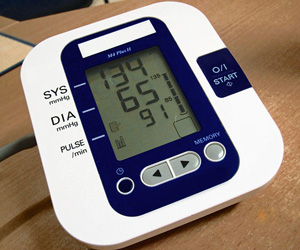
Analytics help me to evaluate user behaviour in a quantitative way. For example, I can see what types of device people are using to access the health checker. If I know that the majority of people are using tablets, I can ensure that the website design is accessible on tablet devices.
Analytics can also be used to gain an in-depth understanding of user demographics such as the age group of people accessing the website. This is really useful for the health checker, as we can make sure that the website is being used by our target age range of 40-74 year olds. In the future, I am going to look at this in further detail to see which age groups use the health checker the most, and those who are missing out.
Advice to women and girls who are interested in careers in user experience but don’t know where to start
Working in an ICT department does not mean I know technology inside out. I think sometimes the word ‘tech’ can scare people and make them think that you have to be a super-clever coding genius. I think the word ‘digital’ can also have the same connotation. This is not true! I can’t code, and although I would consider myself fairly tech-savvy, I can’t fix a computer or help with error messages! I would advise women and girls to embrace digital and make it your own.

Before starting my job, I had no idea what sketching or paper prototyping was. I have great team members that have now taught me these techniques.
Coming up next
Coming up next for me is more health checker testing! We are hoping to run another advertising campaign soon, but we want to make sure that the health checker design is up to scratch before doing so. This means I need to look at the health checker in great detail and ensure that questions are capturing the information we require.
Analytics will help with the targeting of this campaign, so I will be checking up on that over the next couple of weeks. The results from an online questionnaire about printing experiences should also be in, so I am looking forward to breaking these down gaining a good insight.
I am also looking forward to networking further with a charity that I am collaborating with to design a set of questions to measure digital skills. Finally, my team adopts agile working, so I will be attending the fortnightly ‘retrospectives / futurespectives’ – technical terms that basically mean a team review of our previous and upcoming work! This is all mixed together with office and home working. So, lots of analysing, networking and researching for me!
https://www.facebook.com/cityofyork
https://twitter.com/cityofyork
https://twitter.com/AmyLHolloway
https://www.linkedin.com/in/dr-amy-holloway/

